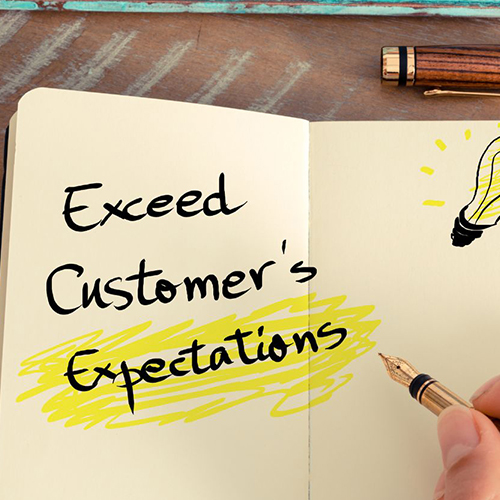This blog describes hyper-personalization in insurance, its benefits, and key strategies to implement it in the insurance sector.
Hyper-personalization in insurance is a new norm that has emerged as a powerful tool to meet and exceed customer expectations. With the help of data analytics and connected devices, insurance companies can individualize or tailor their products, services, and interactions for each customer and stay ahead of the curve with hyper-personalization.
What is Hyper-Personalization in Insurance?
Hyper-personalization is a more advanced way insurance firms can tailor their efforts to serve individual customers.
Segmentation creates groups based on customer activities, likes, and dislikes, while hyper-personalization goes above and beyond traditional methods of customer segmentation and targeting. It is more about drilling down to minute differences, anticipating customer needs, and meeting those needs individually.
“84% of people say that being treated as a unique person is critical to winning their loyalty.”
The key to hyper-personalization lies in the ability to gather and analyze data from various sources, such as
- Social media
- Telematics
- Wearables
- Internet of Things (IoT)
- Customer interactions
Hyper-personalization involves learning more in-depth about customers by analyzing their data using advanced analytics and emerging technologies, such as artificial intelligence (AI) and Machine Learning (ML), for real-time analysis.
Data analysis provides valuable insights into customer behavior, allowing insurance companies to deliver the right products at the right time from the right channel – the 3 Rs of hyper-personalization.
For instance, until now, insurers have been using data to identify low-risk customers and offer them cheaper premium options. With hyper-personalization, insurers can also manage their risk more effectively while offering lower premiums more efficiently and dynamically.
However, insurance companies need to ramp up their data analytics capabilities and continue their efforts to prioritize customer experience (CX) empathetically, which is critical to enhancing customer retention and acquisition rate.
Benefits of Hyper-Personalization for Insurance Companies
By implementing hyper-personalization, insurers can gain numerous benefits. These include:
1. Superior Customer Experience
It allows insurers to enhance customer satisfaction and loyalty by delivering personalized experiences that meet and exceed customer expectations. With hyper-personalization, insurers can:
- Perform customer segmentation in real-time
- Provide relevant and timely recommendations
- Anticipate future needs
- Offer proactive support
- Provide 24/7 personalized customer service
- Dynamic pricing and landing pages/websites
Customers who receive customized products and services are likely to become brand advocates for the insurance company, which can help insurers gain new customers through referrals and recommendations.
“80% of customers are inclined to purchase from a company that offers personalization or personalized experiences.”
2. Improved Risk Assessment
Hyper-personalization enables insurance companies to improve risk assessment and pricing accuracy. By analyzing individual customer data, insurers can better understand risk profiles, identify potential fraud, and price policies more accurately. This not only benefits the insurer but also ensures that customers receive fair and competitive pricing based on their unique circumstances.
3. Boost Operational Efficiency
Lastly, hyper-personalization in insurance can lead to operational efficiencies and cost savings. By partnering or collaborating with InsurTechs, insurers can create profitable products and automate workflow processes. InsurTechs are leveraging technologies like artificial intelligence and machine learning to streamline:
- Underwriting
- Claims processing
- Customer service
This is helping the insurers:
- Reduce administrative overheads
- Ensure faster turnaround times
- Minimize customer acquisition and retention cost
- Improve overall efficiency
4. Increased ROI
By providing tailored products and solutions to the customers, insurers can reduce the policy cancellation rates, which can help boost their customer retention and cross-sell additional policies or upsell higher coverage levels. Since hyper-personalization enables targeted marketing efforts, it can significantly cut down the ad and marketing spend. Additionally, by understanding the behavior of individual policyholders, insurers can detect fraud claims and reduce financial losses, thereby increasing the overall ROI.
“Effective hyper-personalization can result in an 8x return on marketing investment and boost sales by 10% or higher.”
Challenges to Hyper-Personalization Implementation in Insurance
While there are several benefits to hyper-personalization, there are a few considerations and challenges that insurers must address. These include:
1. Data Privacy and Security Concerns
Insurance companies must prioritize data privacy and security to maintain customer
trust. This involves:
- Implementing robust security measures
- Compliance with privacy regulations, such as GDPR
- Transparency about data collection and usage
- Invest in robust cybersecurity measures to protect customer data
2. Data Quality and Accuracy
High-quality and accurate data is the backbone of hyper-personalization. To ensure that the data is reliable and up-to-date, insurance companies must prioritize data cleansing and validation processes.
3. Ethical Use of Data
It’s critical to respect customer preferences and use their data most ethically. This includes:
- Obtaining proper consent from the customers
- Provide them with an option to opt-out
- Be transparent about how their data is/will be used
90% of people say they are happy to share data if it enhances their purchasing experience.
4. Implementation Complexity
Implementing hyper-personalization requires significant investments in technology infrastructure, advanced data analytics capabilities, and a skilled workforce. To achieve this, insurance companies can:
- Collaborate with managed services provider specializing in insurance and InsurTech
- Deploy e-learning or digital learning platform, such as Fluent, to rapidly upskill employees
Strategies for Hyper-Personalization in Insurance Sector
Here are some strategies for implementing hyper-personalization in the insurance sector.
1. Identifying Customer Needs
To improve customer experience and satisfaction with hyper-personalization, it’s critical to first understand the customer. In addition to demographics, such as age, gender, education, etc., insurers need to dig deeper layers, gather data, and analyze it. This includes geographic, psychographic, and behavioral data. The data can be gathered from first and third parties.
First-party data is collected by the insurance companies which includes previous communications, behavior, demographics, etc.
Third-party data allows the insurer to fill in the gaps of knowledge and identify behavioral traits not known to the organization by their interactions. This includes social media posts, credit scores, etc. By combining both data sources, insurers can deliver relevant messaging at the right time to maximize conversion and provide a truly personalized experience for the customer.
2. Invest in Data Assets
Insurance companies should generate data pipelines to capture proprietary information (first-party data) from various sources, such as CRM, account data, web and marketing data, claims and fraud data, etc. This data is most valuable and can be augmented. It’s also important to keep the customer data fluid by implementing a process to collect, update, manage, and secure data proactively.
3. Use Technology (InsurTech)
After understanding the importance of personalization, insurance companies need to have the right data and technical capabilities to understand their customers and implement hyper-personalization. To know the customers better and offer them exactly what they want, insurers need to analyze the gathered data efficiently by using advanced analytics and emerging technologies, including artificial intelligence (AI) and machine learning (ML). They can also use these technologies to develop and deploy:
- Customer data platforms (CDPs)
To consolidate data captured from various sources and use it to create detailed customer profiles, and gain insights into customer behavior, and preferences. - Personalized Recommendation Engines
For analyzing customer data, and behaviors and suggesting relevant insurance products. These engines guide customers toward policies that are best suited to their needs based on previous interactions. - Chatbots and virtual assistants
To provide instant response to customer queries, policy inquiries, claim processes, and general customer assistance. With AI-powered virtual assistants and chatbots, insurers can provide these services 24/7 and enhance the customer experience by delivering quick and accurate responses. - Advanced Real-Time Analytics Platform
This can help insurers quickly get deeper insights into customer data, detect frauds, assess risks, and the impact of hyper-personalization on ROI. Real-time analysis also enables insurers to dynamically personalize customer interactions.
Custom Landing Pages
Create custom landing pages for specific customer segments displaying tailored content, products, and offers for maximum conversions.
Conclusion
In the digital age, customers expect organizations to understand their needs and offer personalized experiences across all industries. The insurance sector is no exception.
Hyper-personalization has the power to transform the insurance industry and become necessary to exceed customer expectations. By harnessing the power of data and leveraging advanced technologies, insurance companies can deliver more personalized experiences, customized products, and proactive support that resonate with individual customers.
Those who achieve hyper-personalization are going to thrive in this competitive landscape and build a strong relationship with their customers that goes beyond customer loyalty. To stay ahead of the curve, insurance companies need to have a technology platform that can help them understand and adapt to the changing customer behavior.
Get in touch with us today to learn more about the implementation of hyper-personalization and get access to the latest in insurance solutions.
To learn more, connect with us info@anaptyss.com



